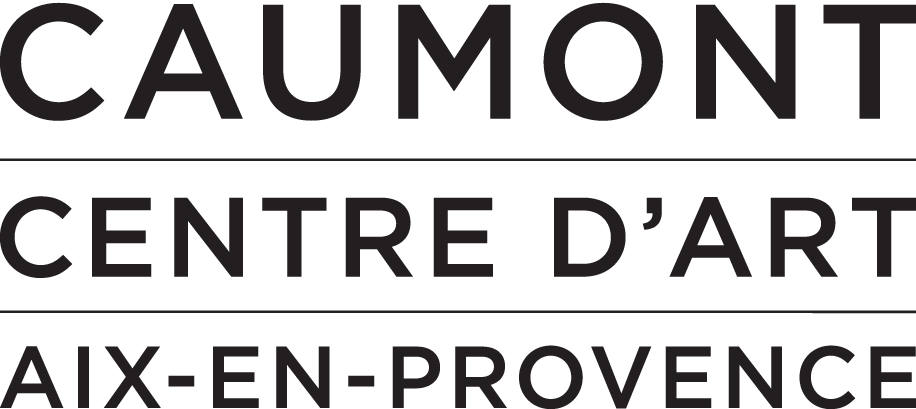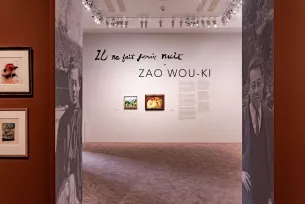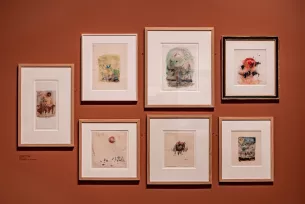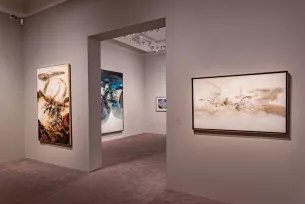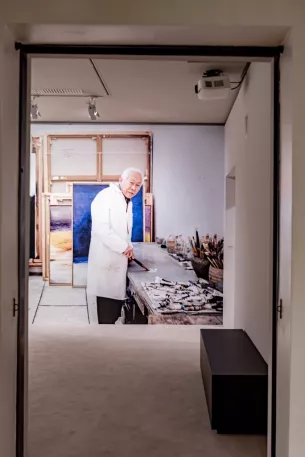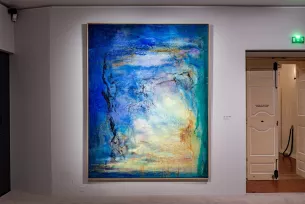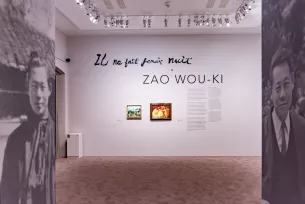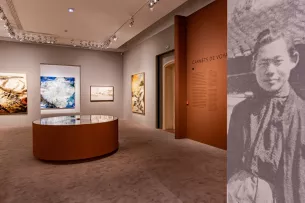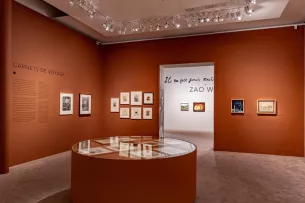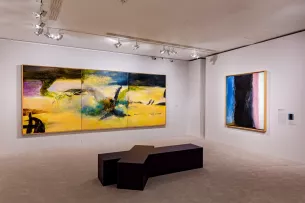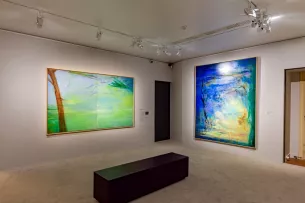Exhibition
Zao Wou-Ki
‘Night has never fallen’
Caumont - Art Centre is presenting an exhibition of works by the French-Chinese artist Zao Wou-Ki (1920- 2013), organised in collaboration with the Zao Wou-Ki Foundation. The exhibition regroups 76 works dating from 1935 to 2009 (oils on canvas, watercolours, and works in China ink on paper) held in public and private collections.
The aim of this ensemble is to highlight one of the artist’s major creative themes: inventing new forms of spatial representation based on his experimentation with colour and the representation of light. Light and space are inextricably linked in his work and enable the viewer to understand his unremitting aim to ‘make visible’ that which is invisible and his soul-his ‘inner space’. In the period that followed his move to Paris in 1948, Zao Wou- Ki explored the theme of daylight and nocturnal light in a series of poetic works that simply featured representations of lunar and solar stars.
The shift towards abstraction in the mid 1950s, through the use of signs and symbols borrowed from Paul Klee, enriched his representation of light and darkness, expressed through an interplay of coloured masses, which clash or merge. The practice of using China ink, undertaken on a suggestion from Henri Michaux as of 1970, enabled him to develop this traditional Chinese art.
He began to explore the notion of spatial voids, through the use of white or the unworked area of the paper, and fullness, through the use of black ink.
His exploration of space extended into his paintings and enabled him to discover new forms of spatial representation. The works dating from the 1970s and 1980s reflect a darker side to the artist’s work that corresponded with periods of suffering and bereavement.
The alternation between light and the dark side drew its inspiration from a long history of Chinese painting that sought to achieve a balance between opposites. Inspired in the early part of his career and until the end of his life by the genius of Paul Cezanne (Hangzhou, landscape, 1946; Tribute to Cézanne, 2005), Zao Wou-Ki was also interested in capturing the unique light of the Midi.
After renting a studio in the Var between 1958 and 1972, where he met up with many friends, he accepted the offer made by José Luis Sert, who built a studio for him in Ibiza in 1973-a new source of inspiration.
As of 2004, Zao Wou-Ki spent several summers in the estate in the Luberon owned by the couturier Emanuel Ungaro, who was also very attached to his home city, Aix-en-Provence.
Zao Wou-Ki worked in the open air, which he had not done before, and painted a series of watercolours which will be exhibited for the first time at Caumont - Art Centre. They evoke the luminosity and the bright and muted colours of the Luberon landscapes. These works reflect his enduring love of painting in the latter part of his life.
The team
Curatorship
Erik Verhagen is Professor of the History of Contemporary Art at the Université Polytechnique Hauts- de-France in Valenciennes. He is at the same time an exhibition curator and art critic, and regularly contributes to the review Art Press. He has published many articles and essays, and directed and co-directed many works in both Europe and the United States. In 2007, he published the first monograph (updated in 2014) on the work of Jan Dibbets and curated an exhibition devoted to the artist in 2010 at the Musée d’Art Moderne de la Ville de Paris. He is a member of the reading committee of Critique d’Art, the editorial committee of Revue de l’Art, the scientific committee of the LAM in Villeneuve d’Ascq, and the board of the Fondation Franz Erhard Walther in Fulda. Erik Verhagen co-curated the exhibition ‘Zao Wou-Ki’ at the Musée d’Art Moderne de la Ville de Paris (2018–2019) and curated the Zao Wou-Ki exhibitions at the Kamel Mennour galleries in Paris and London in 2019.
Yann Hendgen is an art historian who graduated from the second cycle of Museology at the École du Louvre and holds a master’s in Art History and Archaeology. He was Zao Wou-Ki’s personal assistant as of 2002. Since 2012, he has been the Artistic Director of the Zao Wou-Ki Foundation, which was established during the artist’s lifetime.
He is responsible—in coordination with Françoise Marquet-Zao—for the perpetuation, recognition, and diffusion of the artist’s work, via editorial projects and exhibitions. Co-author of the Catalogue Raisonné des Peintures de Zao Wou-Ki, of which he was scientific editor (Volume 1, Flammarion, December 2019), he has also written many essays about the artist. The exhibitions devoted to Zao Wou-Ki, for which he has recently been co-curator, include the exhibition held in the Fondation Pierre Gianadda in Martigny (Switzerland, 2015), the Musée de l’Hospice Saint-Roch in Issoudun (France) in 2016, and at the Musée d’Art in Pully (Switzerland, 2019).
Production and creation
Agnès Wolff, Director of Exhibitions at Culturespaces; Cecilia Braschi, Director of Exhibitions at Caumont - Art Centre; Sophie Blanc, Registrar at Caumont - Art Centre; and Livia Lérès and Bérangère Renard, who are responsible for iconography at Culturespaces.
Scenography
Hubert le Gall, a French designer, artist, and contemporary art sculptor, has created original scenographies for many exhibitions, and in particular for the following exhibitions at Caumont - Art Centre: ‘Joaquín Sorolla: Spanish Master of Light’, ‘Hokusai, Hiroshige, Utamaro … The Great Masters of Japan – The Georges Leskowicz Collection’ (2019); ‘Masterpieces from the Guggenheimfrom Manet to Picasso: the Thannhauser Collection’ (2019); ‘Nicolas de Staël in Provence’ (2018); and ‘Sisley the Impressionist’ (2017).
